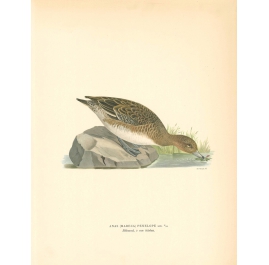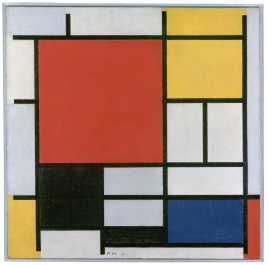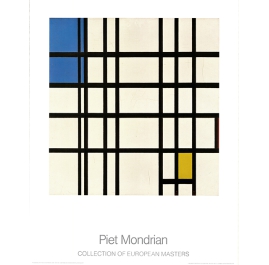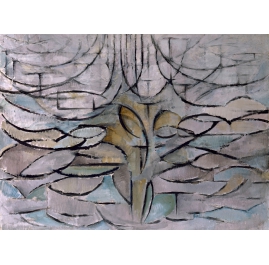No products
Artwork successfully added to your shopping cart
There are 0 items in your cart. There is 1 item in your cart.
Artworks
Artworks by Artist: Mondriaan, Piet
*1872, Dutch painter of classical modernism. Mondriaan is regarded as one of the most important representatives of Dutch Constructivism as well as Concrete Art or systematic non-figurative art, which is entirely devoted to design by constantly re-exploring the relationship between form and colour.
Educated at the Hague School around 1900, Mondriaan, after his Impressionist phase, began to devote himself to Fauvism around 1908 (under the influence of van Gogh) and was inspired to Cubism three years later in Paris (by Picasso and Braque).
1915 foundation of the art forum for abstract art "De Stijl", together with Theo van Doesburg and other artists Development of neoplasticism ("new design") with the aim of creating a new formal and aesthetic expression in art.
*1872, Dutch painter of classical modernism. Mondriaan is regarded as one of the most important representatives of Dutch Constructivism as well as Concrete Art or systematic non-figurative art, which is entirely devoted to design by constantly re-exploring the relationship between form and colour.
Educated at the Hague School around 1900, Mondriaan, after his Impressionist phase, began to devote himself to Fauvism around 1908 (under the influence of van Gogh) and was inspired to Cubism three years later in Paris (by Picasso and Braque).
1915 foundation of the art forum for abstract art "De Stijl", together with Theo van Doesburg and other artists Development of neoplasticism ("new design") with the aim of creating a new formal and aesthetic expression in art.
-
Mondriaan, Piet
Composition with Red,... Composition with Red,...
One of Piet Mondrian's most famous paintings, which correspond to his abstract forms. According to the concept of "pure" forms: no soft and curved lines, only straight lines either horizontal or vertical, which represent the harmony between opposites. This is intended to create a "rhythm" resulting from the balance between colour and "non-colour".
€0 -
Mondriaan, Piet
Rhythm from black lines Rhythm from black lines
Art print on heavy paper After the original from 1935-1942 In great condition
€105 -
Mondriaan, Piet
Flowering Apple Tree Flowering Apple Tree
From the cubist creative phase, in which Mondrian mainly painted landscapes and chose motifs such as trees and mills. Mondrian developed his own Cubist style, which influenced other Cubist artists in Paris. During this period he takes part in exhibitions at the Salon des Indépendants in Paris.
€0





